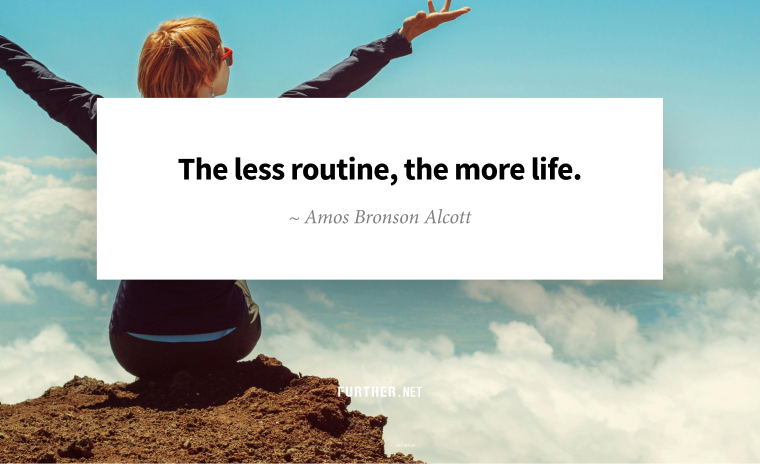
You’ve been around enough to know smart habits always beat ambitious goals. As a Further reader, you’re also likely dedicated to ongoing self-improvement, which entails turning short-term challenges into long-term habits — like getting in shape, quitting addictions, or training your brain to make better choices.
In other words, you strive to create good habits and break bad ones by taking tiny steps. But it may be time to blow up your “atomic habits” a bit.
Like everything good for you, habits have a dark side. French existentialist Gabriel Marcel coined the term “crispation” for becoming stuck in routines and habituated behaviors. (Side note: “crispation” has my vote for a late edition to the Gen X lexicon, as in, “Dude, I’m in total crispation.”)
When your habits become shorthand for a rut, it’s time to ditch your dependence on the known and start consciously exploring new directions.
Routine Inspection
All habits start the same way: relentless repetition. The problem is if you do something repeatedly to the point of effortlessness, what once was a conscious effort becomes mindless. According to neuroscientist Tali Sharot, author of Look Again: The Power of Noticing What Was Always There, this is a crucial mistake.
If you’ve been with the same or a bunch of people or have been in the same place for a while, with the same policies and the same routines, it will be more difficult for them to see what are the things that we can do better, right? Because of habituation.
This applies to all areas of life, personal and professional. As Sharot points out, the issue isn’t with what you’re doing; it’s what you’re not noticing and, thus, not doing because you’re on autopilot.
According to Sharot, the cure for crispation’s stagnation has another snappy name: “dishabituation.” It’s essential for those of us in midlife, as we’re the most likely to have deeply routinized behaviors, thanks to being on the same hamster wheel for decades. Dishabituation provides a sorely needed jolt of adventure and novelty, sparking joy and new possibilities.
The Art of Dishabituation
Generally speaking, there are two types of people in the world: explorers, who constantly seek new experiences, and exploiters, who stick with doing the things they know they’re OK with. Sharot argues that most of us are too much on the exploiter side.
So, the trick is to create more balance in handling your habits by adopting two practices:
- Breaking: This means literally taking a break from your routines, so when you return to them, you’ll have a newfound appreciation for your life.
- Changing: This is more lasting, as it means taking lasting action. For example, if you always work indoors, you can pivot to doing more tasks outside. Even small changes help unlock creativity and provide fresh inspiration.
In other words, if you’re knee-deep in a crispation situation, try dishabituation — or better yet, make a habit of it!
Trapped in routine? Here’s how to “dishabituate” and rediscover joy (Big Think)
